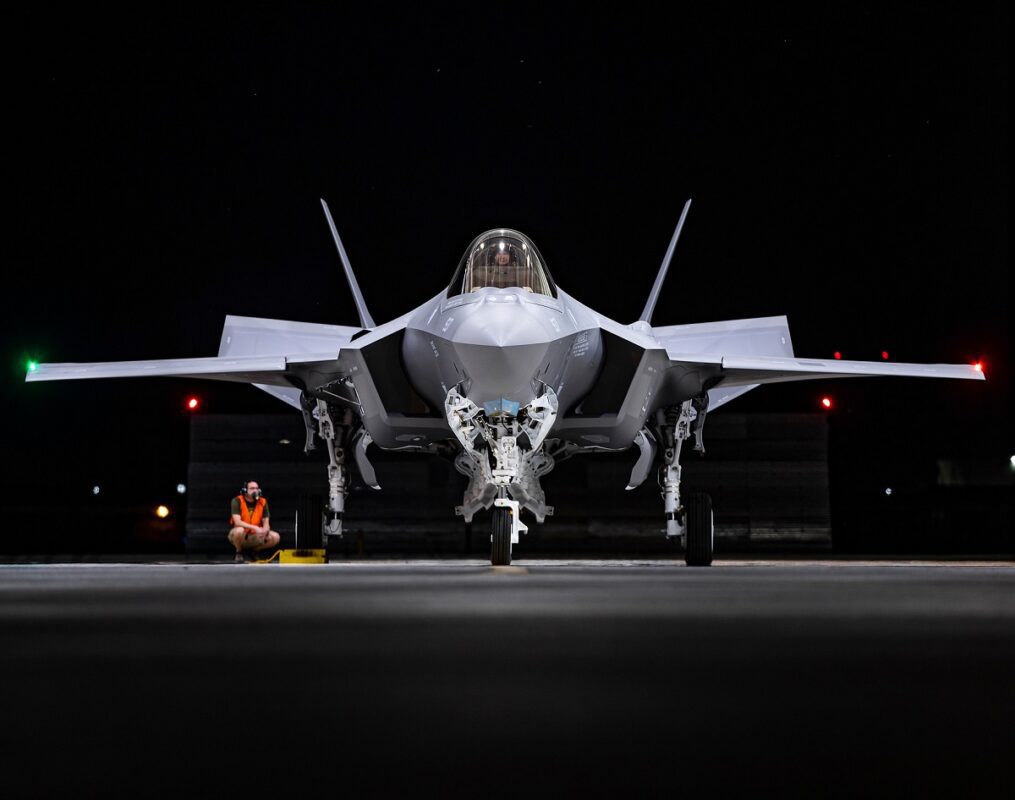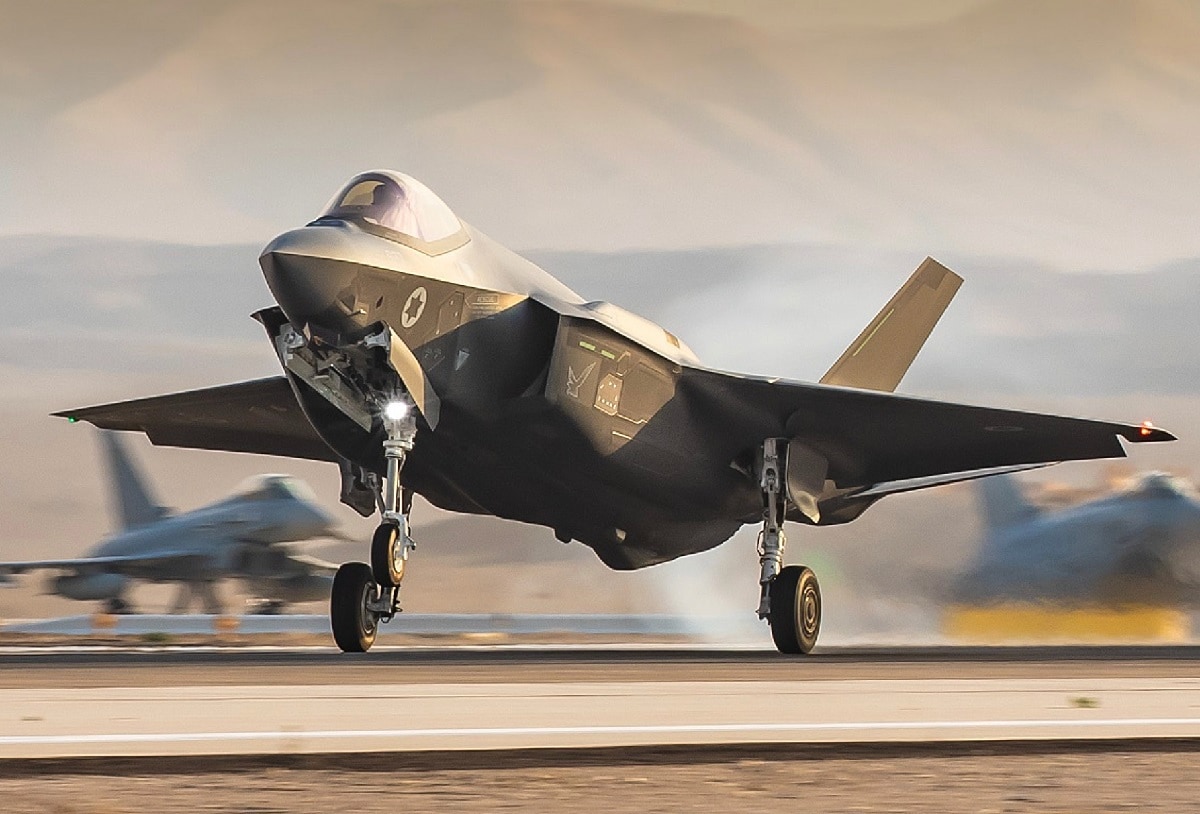Among the most famous quotes from Prussian general and military theorist Carl von Clausewitz is his statement, “In war everything is uncertain and variable, intertwined with psychological forces and effects, and the product of a continuous interaction of opposites.” Those words have been taken to heart by countless military leaders, analysts, and theorists – yet, we often miss one point where von Clausewitz is entirely wrong.
“In war everything is uncertain” except for the fact that there will be losses on the battlefield and that includes both the men and material. It doesn’t matter how much a tank, ship, or airplane costs – there will be losses in wartime.
F-35 War Stories or Fiction?
That will include the Lockheed Martin F-35 Lightning II, the most capable and advanced multirole jet fighter built to date, and the most expensive. No matter how capable, how advanced, and how expensive, there will be losses. The F-35 isn’t unstoppable, it isn’t invincible, and an enemy might be lucky when a pilot makes a mistake.
Those are simple facts that need to be remembered.
There have been seven crashes to date involving the Lockheed Martin-made F-35, the result of pilot mishaps, computer glitches, and mechanical failures. Flying a jet fighter is still a dangerous job!
Did a Russian Missile Strike an Israeli F-35?
As previously reported by 19FortyFive’s Maya Carlin, in 2017, there were rumors that one of the Israeli Air Force’s (IAF’s) F-35 fighter jets was hit by a Soviet-made S-200 missile fired by the Syrian Defense Forces. The story seems dubious, given that the S-200 was designed in the 1960s.
It should be noted that Israel has operated the F-15 Eagle for decades and hasn’t lost a single one in aerial combat! It would therefore be hard to believe that a missile dating back to the middle of the Cold War could be capable of hitting a modern aircraft, let alone downing an F-35.
But again, it wouldn’t be impossible.
Aviators need to do absolutely everything right 100 percent of the time, and air defense teams need to get lucky just once.
Bird Strike Or Missile
The alleged incident involving the F-35 and the S-200 occurred on October 16, 2017 – when Prime Minister Benjamin Netanyahu ordered the IAF to bomb Syria in response to Syria firing at an Israeli spy plane. The timing of the attack was notable as Russian Federation Defense Minister Sergei Shoigu was visiting Tel Aviv.
Netanyahu wanted to send a message to Damascus and Moscow – striking Russia’s close ally as Shoigu was meeting with Israel. It was clearly meant to project Israeli military strength.
Then “something” happened.
According to Syria, it hit and damaged one of the F-35Is – the Israeli variant of the Lightning II.
As Carlin noted, “The Israel Defense Forces (IDF) immediately responded to these reports on social media, claiming that although an anti-aircraft missile was launched from Syria towards one of its airframes, the hit was unsuccessful. In a retaliatory strike, the IDF struck a Syrian SAM battery near Damascus.”
Israeli media also reported that one of its F-35I jets had been damaged in a bird strike nearly two weeks prior. While the plane landed safely, the IDF was uncertain whether or not it would remain operational. The timing of the story was just as notable.
So what happened?
While most experts think the F-35 strike never occurred, I have a different opinion. I would argue it is possible that the Syrian S-200 missile did strike the plane, and Israel – with nudging from defense industry – concocted the bird strike story.
The fact that the aircraft was returned to Lockheed Martin for repairs does seem noteworthy too.
Official Word – It was a Bird
The official stance from the Israeli military was, “During a training sortie two hits were found on the plane, following a collision with a bird. After an evaluation and assessment of the damage conducted together with the manufacturer – Lockheed Martin, the plane was sent for normal maintenance and repair. It will return to full service in the next few days.”
Was the plane damaged and repaired, or was it possibly damaged beyond repair, and Israel received a new aircraft to cover up said damage? We may never know. Again, most experts buy the bird strike story.
Both defense industry and Israel would have good reason not to disclose that the aircraft was seriously damaged. In the end, it might not matter.
The point is that the aviator made it back safely.
Planes will be lost in combat, but they’re replaceable. That was a point the UK’s Royal Air Force understood very well in World War II. It was far easier to build more Hurricanes and Spitfires than it was to train pilots.
The F-35 may be expensive – so much so that no operator ever wants to see one lost – but human life is priceless. That is one thing in war that is certain.

F-35I Adir. Lockheed Martin Photo
Author Experience and Expertise
A Senior Editor for 19FortyFive, Peter Suciu is a Michigan-based writer. He has contributed to more than four dozen magazines, newspapers, and websites with over 3,200 published pieces over a twenty-year career in journalism. He regularly writes about military hardware, firearms history, cybersecurity, politics, and international affairs. Peter is also a Contributing Writer for Forbes and Clearance Jobs. You can follow him on Twitter: @PeterSuciu.
From the Vault
The Navy Sent 4 Battleships To Attack North Korea
‘Sir, We Hit a Russian Submarine’: A U.S. Navy Sub Collided with a Nuclear Attack Sub

